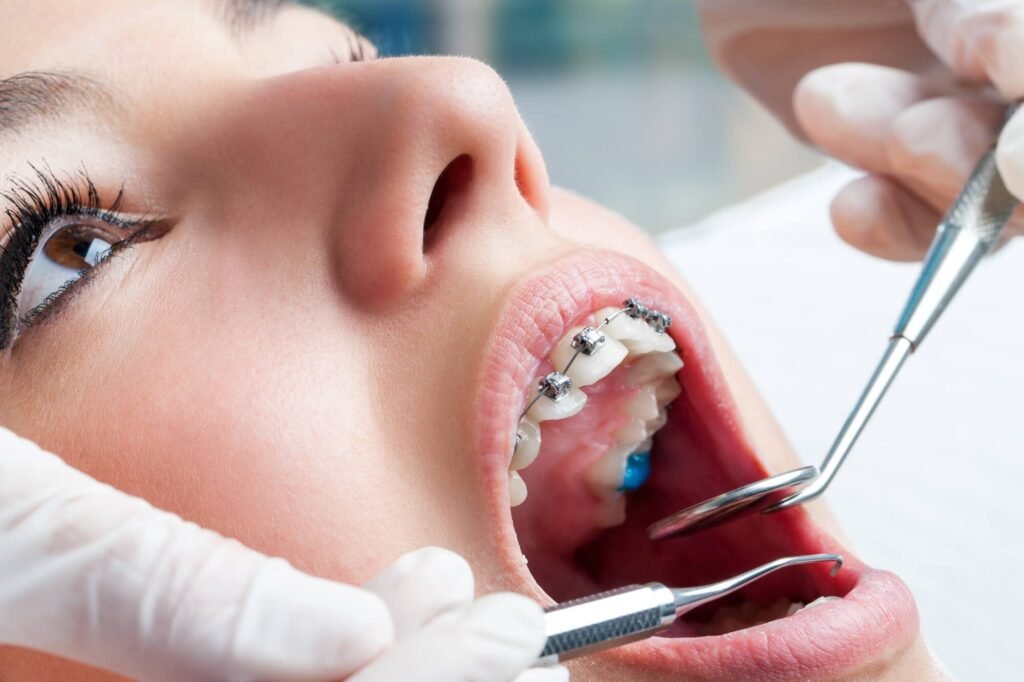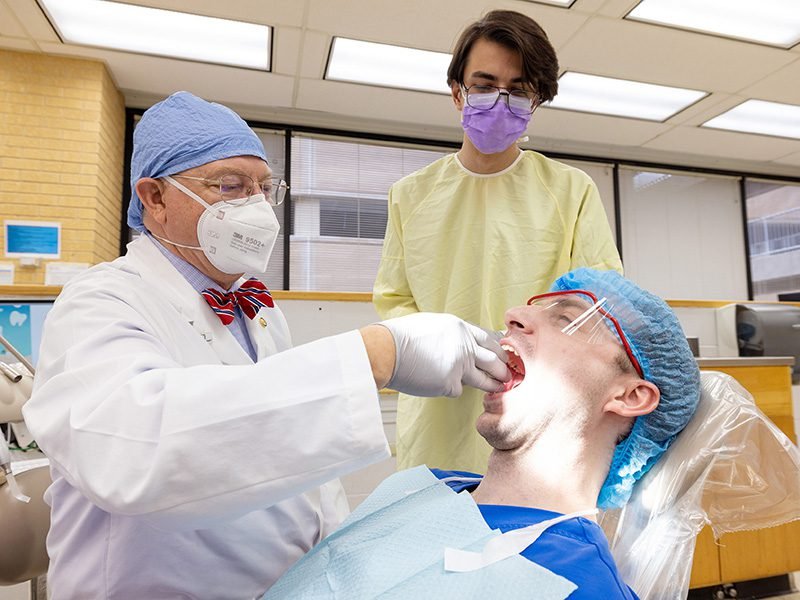Table of Contents
Understanding the Importance of Quality Assurance
Quality assurance is a critical component in any industry, but it holds even greater significance in dentistry. As dental health professionals, our primary goal is to provide the highest standard of care to our patients. Quality assurance plays a pivotal role in ensuring that this goal is consistently met.
First and foremost, quality assurance helps to safeguard the well-being of our patients. By implementing robust quality control measures, we can identify and rectify any potential issues or errors in our procedures. This not only minimizes the risk of adverse outcomes but also instills confidence in our patients that they are in safe hands. Furthermore, quality assurance ensures that all treatments and interventions are based on evidence-based practices, guaranteeing the most effective and appropriate care.

Establishing a Comprehensive Quality Assurance System
A comprehensive quality assurance system is essential for any organization that aims to deliver products or services of the highest standard. It involves implementing a set of processes and procedures to ensure that quality is consistently maintained throughout all aspects of the business. By establishing a comprehensive quality assurance system, a company can identify potential issues before they become major problems, improve customer satisfaction, and enhance overall efficiency.
One of the key factors in establishing a comprehensive quality assurance system is defining clear quality standards. These standards serve as guidelines for employees and help them understand what is expected of them in terms of performance and quality. It is important to involve all relevant stakeholders, such as management, staff, and customers, in the process of setting these standards to ensure that they are realistic, achievable, and aligned with the organization’s goals and objectives.
The next step in establishing a comprehensive quality assurance system is to develop and implement effective processes and procedures. This includes conducting regular audits and inspections, documenting and analyzing data, and continuously monitoring performance. By implementing these processes and procedures, an organization can identify areas for improvement, detect any potential deviations from the established quality standards, and take corrective actions in a timely manner. This helps to ensure that the quality standards are consistently met and maintained throughout the organization.
The Role of Random Checks in Ensuring Quality
Random checks play a crucial role in ensuring the quality of any dental practice. By conducting random checks, dental professionals can identify potential issues and areas for improvement, ultimately leading to enhanced patient care and satisfaction.
One of the key objectives of random checks is to assess the adherence to established protocols and standards within the dental practice. Random checks help ensure that all staff members are consistently following guidelines and procedures, guaranteeing uniformity in the delivery of dental services. This not only maintains the quality of care but also mitigates the risk of errors or omissions that could compromise patient safety.
Moreover, random checks provide valuable insights into the overall efficiency and effectiveness of the practice. By analyzing the results of these checks, dental professionals can identify any patterns or trends that may impact the quality of care provided. This allows for timely interventions and improvements to be implemented, ensuring that patients receive the highest standard of dental treatment. Overall, random checks serve as an important tool in upholding the quality and integrity of dental practices.

Identifying the Key Objectives of Random Checks
Random checks play a crucial role in ensuring quality in various industries, including dentistry. These checks serve several key objectives that are fundamental to maintaining a high standard of care and treatment. The first objective is to detect and identify any discrepancies or errors in the dental practice. Random checks provide an opportunity to assess whether the established protocols and procedures are being followed consistently and accurately. By identifying any deviations or gaps, dental professionals can take corrective action to ensure that all patients receive the best possible treatment based on evidence-based practices and guidelines.
In addition to detecting errors, another important objective of random checks is to monitor performance and evaluate the effectiveness of the dental practice. By analyzing the results of these checks, dental professionals can gain valuable insights into the overall quality of care being provided. This evaluation helps in identifying areas that require improvement or further training. Moreover, random checks also contribute to fostering a culture of continuous learning and improvement within the dental team. By addressing any shortcomings and implementing necessary changes, dental practices can enhance their efficiency, effectiveness, and patient satisfaction. Ultimately, the key objectives of random checks in dentistry revolve around maintaining consistent quality, promoting best practices, and ensuring the delivery of optimal oral healthcare.
Developing a Random Check Protocol
Developing a Random Check Protocol is a critical step in ensuring the effectiveness of quality assurance processes. A robust and well-defined protocol enables dental practices to implement random checks systematically and consistently. A random check protocol should outline the objectives, procedures, and criteria for selecting samples, as well as guidelines for analyzing and addressing the findings.
To develop a random check protocol, it is essential to involve relevant stakeholders, such as dentists, dental hygienists, and administrative staff. Collaborative input ensures that the protocol incorporates a comprehensive understanding of the practice’s specific needs and goals. It is advisable to refer to professional guidelines, industry standards, and recommendations from reputable dental organizations when formulating the protocol. Additionally, the protocol should be flexible enough to adapt to evolving best practices and emerging research in the field of dentistry. With a well-designed random check protocol in place, dental practices can enhance the accuracy and reliability of their quality assurance systems, ultimately improving patient outcomes and satisfaction.
| Stage | Activity | Responsible Stakeholders | Details/Comments |
|---|---|---|---|
| Planning | Define Objectives and Scope | Dentists, Dental Hygienists, Management | Clearly outline the goals and areas to be covered by the random check. Ensure alignment with regulatory standards and practice guidelines. |
| Determine Frequency and Sample Size | Management, Dentists, Dental Hygienists | Establish how often random checks will occur and the number of cases or records to be reviewed during each check. | |
| Develop Randomization Method | Management, Dentists, Dental Hygienists | Implement a fair and transparent method for selecting cases or records for review, such as computer-generated randomization. | |
| Implementation | Conduct Random Checks | Dental Hygienists, Dentists, Assigned Team Members | Execute the random checks according to the established frequency and sample size. Ensure that team members are trained in the review process and documentation standards. |
| Document Findings | Dental Hygienists, Dentists, Assigned Team Members | Record observations, discrepancies, and areas for improvement discovered during the random checks. Document any corrective actions taken or recommendations proposed. | |
| Communicate Results and Feedback | Management, Dentists, Dental Hygienists | Share the findings of the random checks with relevant stakeholders promptly. Provide constructive feedback and discuss strategies for addressing identified issues. | |
| Monitoring | Monitor Compliance and Effectiveness | Management, Dentists, Dental Hygienists | Regularly assess adherence to the random check protocol and its impact on improving compliance, quality of care, and patient outcomes. |
| Review and Update Protocol as Needed | Management, Dentists, Dental Hygienists | Periodically evaluate the effectiveness of the random check protocol and make adjustments based on feedback, emerging best practices, and regulatory changes. |
Selecting Random Check Samples
The process of selecting random check samples is a crucial step in ensuring the accuracy and effectiveness of quality assurance protocols in dentistry. By randomly selecting samples from various stages of the dental process, practitioners can gain valuable insights into the overall quality and consistency of their work.
When selecting random check samples, it is important to consider a range of factors, such as the type of dental procedure, the patient’s demographic characteristics, and any specific areas of concern. By doing so, dentists can ensure that the samples are representative of the entire patient population and help identify potential areas for improvement. Additionally, it is essential to document the selection process thoroughly to maintain transparency and accountability.
Furthermore, the selection of random check samples should be an ongoing process, with regular evaluations to ensure its effectiveness. By continuously analyzing the results of random checks, dentists can identify patterns and trends that can guide future quality improvement efforts. Additionally, by involving a diverse team of professionals in the selection process, including dental assistants, hygienists, and office staff, a more comprehensive understanding of the overall quality of dental care can be achieved.
In conclusion, the selection of random check samples is a critical component of a comprehensive quality assurance system in dentistry. By selecting samples that are representative of the patient population and consistently evaluating the results, dental practitioners can improve the quality and consistency of their work, ultimately leading to better patient outcomes.
Ensuring Consistency in Random Check Procedures
Consistency is a crucial aspect of any random check procedure within a quality assurance system. It ensures that the checks are performed in a standardized manner, allowing for accurate and reliable results. To achieve consistency, it is important to establish clear guidelines and protocols that outline the specific steps to be followed during the random check process.
One way to ensure consistency is by providing thorough training and education to staff members involved in conducting random checks. By ensuring that they have a solid understanding of the procedures and expectations, they will be better equipped to consistently implement the checks. This can be done through workshops, seminars, or even online training courses specifically tailored to random check protocols. Additionally, regular refresher sessions can be held to reinforce the importance of consistency and address any questions or concerns that may arise.
Another key aspect of ensuring consistency in random check procedures is the use of standardized checklists or templates. These can serve as a guide for staff members, helping them to systematically review and evaluate the necessary elements during the check process. By following a standardized checklist, the likelihood of overlooking important details or deviating from the established procedures is minimized. It also ensures that all checks are conducted in a consistent and thorough manner, regardless of the individual performing the task.

Training and Educating Staff on Random Check Processes
Training and educating staff on random check processes is vital for the successful implementation of quality assurance in any organization. By providing comprehensive training, employees can gain a clear understanding of the purpose and procedures of random checks, ensuring their active involvement in the process.
During training, it is important to emphasize the significance of random checks in maintaining and improving the quality of dental services. Educating staff on the objectives of random checks, such as identifying potential issues or areas for improvement, helps them appreciate the importance of their role in ensuring patient satisfaction and safety. Furthermore, staff should be educated on the specific protocols and guidelines for conducting random checks, including the criteria for selecting samples and the proper techniques for collecting and analyzing data.
Through training and education, staff members can develop the necessary skills and knowledge to perform random checks effectively. By emphasizing the importance of consistency in random check procedures, such as following standardized protocols and documenting findings accurately, staff can ensure reliable and valid results. Additionally, training should also address any potential challenges or issues that may arise during the process, equipping staff with the tools and strategies to overcome such obstacles.
In conclusion, training and educating staff on random check processes is a critical step in establishing a comprehensive quality assurance system. By providing staff members with the necessary knowledge and skills, organizations can ensure the effective implementation of random checks and ultimately enhance the overall quality of dental services provided.
Performing Random Checks: Step-by-Step Guide
Performing random checks is a crucial step in ensuring the quality and accuracy of dental procedures. By implementing a systematic approach, dental practices can identify potential issues and make necessary improvements to uphold patient safety and satisfaction. Here is a step-by-step guide to performing random checks in a dental setting.
1. Establish the Criteria: Start by defining the specific criteria that will be assessed during the random checks. This could include factors such as infection control protocols, recordkeeping accuracy, treatment planning, and adherence to ethical guidelines.
2. Determine the Sampling Method: Decide on the sampling method that will be used to select cases for random checks. This could involve selecting a random sample of patient files, treatment plans, or even observing dental procedures in real-time.
3. Assess the Cases: Thoroughly review the chosen cases according to the defined criteria. Evaluate the quality of care provided, accuracy of documentation, adherence to protocols, and any potential errors or deviations from best practices.
4. Document the Findings: Keep detailed records of the findings from each random check. This information will be essential for analysis, identifying trends or patterns, and informing quality improvement initiatives.
5. Communicate and Discuss: Share the findings with the dental team, including dentists, hygienists, and administrative staff. Engage in open and constructive discussions to address any identified issues and brainstorm potential solutions.
Performing random checks is an ongoing process that requires continuous evaluation and improvement. By following these steps, dental practices can ensure transparency, accountability, and ultimately deliver high-quality care to their patients.
Analyzing Random Check Results
Analyzing random check results is a crucial step in the quality assurance process, as it allows for the identification of any potential issues or areas of improvement. By carefully examining the data obtained from random checks, dental professionals can gain valuable insights into their practice’s overall quality and performance.
One important aspect of analyzing random check results is the identification of patterns or trends. By observing recurring issues or inconsistencies, dentists can pinpoint areas that require further attention or intervention. For example, if there is a consistent pattern of poor sterilization practices among the random check samples, it may indicate the need for additional training or stricter adherence to guidelines.
Furthermore, analyzing random check results helps dental professionals assess the effectiveness of their quality assurance system. By comparing the actual outcomes with the established objectives, dentists can determine whether their current procedures are yielding the desired results. This analysis allows for the fine-tuning of the quality assurance system and the implementation of necessary improvements to enhance patient care and safety.
Addressing Potential Issues and Improving Quality
Addressing Potential Issues and Improving Quality
In any quality assurance system, it is crucial to address potential issues and continuously strive for improvement. This holds true for all industries, including dentistry, where the quality of care provided to patients is of utmost importance. By identifying and resolving potential issues, dental professionals can ensure that their practices are operating at the highest level of efficiency, efficacy, and safety.
One potential issue that may arise is a lack of consistency in the implementation of quality assurance protocols. This can lead to variations in the level of care provided to patients, which may compromise treatment outcomes. It is essential for dental practices to establish clear and standardized procedures for performing quality checks and to provide ongoing training and education to staff members on these protocols. By maintaining consistency in the implementation of quality assurance measures, dental professionals can ensure that all patients receive the same level of high-quality care.
The Benefits of Random Checks in Dentistry
Random checks play a crucial role in ensuring high-quality dental care and maintaining patient satisfaction in the field of dentistry. By randomly selecting and evaluating a sample of patient charts, treatment plans, and dental procedures, dentists can identify any inconsistencies or errors and take corrective measures promptly. This systematic approach not only helps in enhancing the overall quality of dental services but also strengthens the trust and confidence of patients in their dental practitioners.
One of the key benefits of random checks in dentistry is the detection and prevention of potential issues before they escalate into more significant problems. By conducting regular random checks, dentists can identify any deviations from established treatment protocols or poor record-keeping practices. This proactive approach allows for timely intervention and correction, reducing the risk of adverse outcomes for patients. Additionally, random checks provide an opportunity for dentists to assess the effectiveness of their clinical procedures, identify areas for improvement, and implement necessary changes to enhance the quality of care provided.
Overcoming Challenges in Implementing Random Checks
Implementing random checks in any system can be met with a number of challenges. One common challenge is resistance from employees who may perceive random checks as intrusive or unnecessary. Overcoming this challenge requires clear communication and education about the purpose and benefits of random checks. It is important to emphasize that random checks are not meant to punish or micromanage employees, but rather to ensure the highest levels of quality and patient satisfaction.
Another challenge in implementing random checks is ensuring consistency in the procedures. Random checks should be conducted in a fair and unbiased manner, without any favoritism or discrimination. Consistency in the selection process, timing of checks, and evaluation criteria is crucial for maintaining the integrity of the random check system. This can be addressed by establishing clear protocols and guidelines that are followed consistently by all staff members involved in the random check process. Regular training sessions can also be conducted to reinforce the importance of consistency and address any questions or concerns that may arise.
Overcoming challenges in implementing random checks requires a strategic and proactive approach. By addressing resistance, ensuring consistency, and providing ongoing education and support, organizations can successfully implement random checks that contribute to improved quality and patient outcomes.
Ensuring Transparency and Accountability in Random Check Processes
Transparency and accountability are crucial elements in any quality assurance system, including random check processes. By ensuring transparency, we create an environment where all stakeholders have access to the necessary information regarding random checks and their outcomes. This transparency fosters trust and allows for open communication and collaboration between different parties involved in the process, such as dentists, staff, and patients.
To achieve transparency, it is important to establish clear guidelines and protocols for random checks and ensure that these are communicated effectively to all staff members. By doing so, everyone understands their roles and responsibilities, as well as the purpose and objectives of random checks. Additionally, providing regular updates on the results of random checks can further enhance transparency, as it allows for the identification of areas that require improvement or additional attention.
Accountability goes hand in hand with transparency, as it ensures that all individuals involved in random check processes take responsibility for their actions and decisions. This accountability can be facilitated through proper documentation and record-keeping, where detailed information regarding the sample selection, assessment process, and any actions taken as a result of the random checks are carefully recorded and maintained. By promoting accountability, dental clinics can demonstrate their commitment to delivering high-quality care and continuously improving their services.
| Aspect | Description |
|---|---|
| Purpose | Clearly define the objective of random checks, such as ensuring compliance with hygiene standards or identifying fraudulent billing practices. |
| Selection Criteria | Establish transparent criteria for selecting practices or individuals for random checks, such as random sampling or risk-based selection. |
| Documentation | Require thorough documentation of the random check process, including the rationale for selection, procedures followed, and outcomes. |
| Oversight | Assign oversight responsibilities to a regulatory body, professional association, or independent committee to ensure impartiality and fairness. |
| Reporting | Mandate the submission of comprehensive reports detailing findings, actions taken, and recommendations for improvement. |
| Feedback Mechanism | Implement a mechanism for receiving feedback from practitioners subjected to random checks to address concerns and improve processes. |
| Training and Resources | Provide adequate training and resources to personnel involved in conducting random checks to enhance consistency and effectiveness. |
| Compliance Monitoring | Regularly monitor compliance with established protocols and standards governing random check processes. |
| Public Accessibility | Make information regarding random check procedures, outcomes, and compliance publicly accessible to foster transparency and accountability. |
| Continuous Improvement | Emphasize continuous improvement by reviewing and updating random check protocols based on feedback, emerging trends, and best practices. |
Integrating Technology for Efficient Random Checks
Efficient random checks are crucial in ensuring the quality and reliability of various processes, including those in the dental industry. With advancements in technology, integrating technological tools and solutions can significantly enhance the efficiency and effectiveness of random checks.
One way to integrate technology is by utilizing electronic systems for generating random check samples. These systems can randomly select patients, treatment plans, or specific procedures, ensuring that the checks are truly random and unbiased. By automating this process, dental professionals can save time and reduce the potential for human error.
In addition to random sample selection, technology can also streamline the data collection and analysis process. Implementing digital platforms or software solutions that allow for real-time data entry and analysis can enhance the accuracy and speed of evaluating random check results. This not only improves efficiency but also enables prompt identification of any deviations or inconsistencies that require attention.
Integrating technology into random checks offers numerous advantages, such as improved accuracy, reduced administrative burden, and enhanced data management. However, it is essential to ensure that the selected technology aligns with the specific needs and requirements of the dental practice. When done correctly, the integration of technology in random checks can lead to more efficient quality assurance processes and ultimately contribute to higher standards of patient care.
Continuous Evaluation and Improvement of Random Check Systems
Continuous evaluation and improvement of random check systems is crucial in maintaining the highest standards of quality assurance in any dental practice. By regularly reviewing and assessing the effectiveness of these systems, dental professionals can identify any weaknesses or areas for improvement, and implement necessary changes to enhance overall quality.
One key aspect of continuous evaluation is the regular analysis of random check results. By carefully examining the data collected from random checks, dental practitioners can gain valuable insights into the overall quality of their practices. This analysis can help identify any recurring issues or patterns that may indicate the need for specific training or procedural changes. Additionally, by tracking and comparing random check results over time, dental professionals can measure the effectiveness of any implemented improvements, ensuring ongoing progress in maintaining and enhancing quality assurance protocols.
What is the purpose of continuous evaluation and improvement of random check systems?
Continuous evaluation and improvement of random check systems ensures that quality assurance measures are effective and up-to-date, leading to improved accuracy and consistency in the evaluation process.
How does implementing random checks contribute to quality assurance in dentistry?
Random checks help identify potential issues and areas for improvement, leading to enhanced quality control and patient satisfaction in dental practices.
What are the key objectives of random checks?
The key objectives of random checks include identifying any discrepancies or deviations from established protocols, assessing the quality of dental procedures, and ensuring adherence to industry standards and regulations.
How can technology be integrated into random check processes?
Technology can be integrated into random check processes by using digital tools for data collection and analysis, streamlining the random check procedure, and increasing efficiency and accuracy.
What steps can be taken to ensure transparency and accountability in random check processes?
To ensure transparency and accountability, random check processes should be well-documented, clearly communicated to all staff members, and regularly reviewed and audited by relevant authorities or internal quality assurance teams.
What are some common challenges in implementing random checks?
Common challenges in implementing random checks may include resistance from staff members, lack of awareness about the importance of quality assurance, and difficulties in selecting representative random check samples.
How can potential issues identified through random checks be addressed and quality improved?
Potential issues identified through random checks can be addressed by providing additional training or education to staff members, revising protocols or procedures, and implementing corrective actions to improve the overall quality of dental services.
How can staff members be trained and educated on random check processes?
Staff members can be trained and educated on random check processes through comprehensive training programs, workshops, and regular communication about the importance and procedures of random checks.
Why is it important to ensure consistency in random check procedures?
Ensuring consistency in random check procedures helps maintain accuracy and fairness in the evaluation process, leading to reliable and valid results that can be used to improve quality assurance measures.
What are the benefits of random checks in dentistry?
Random checks in dentistry provide an objective assessment of the quality of dental procedures, help identify any potential issues or deviations from standards, and contribute to overall improvement in patient care and satisfaction.











